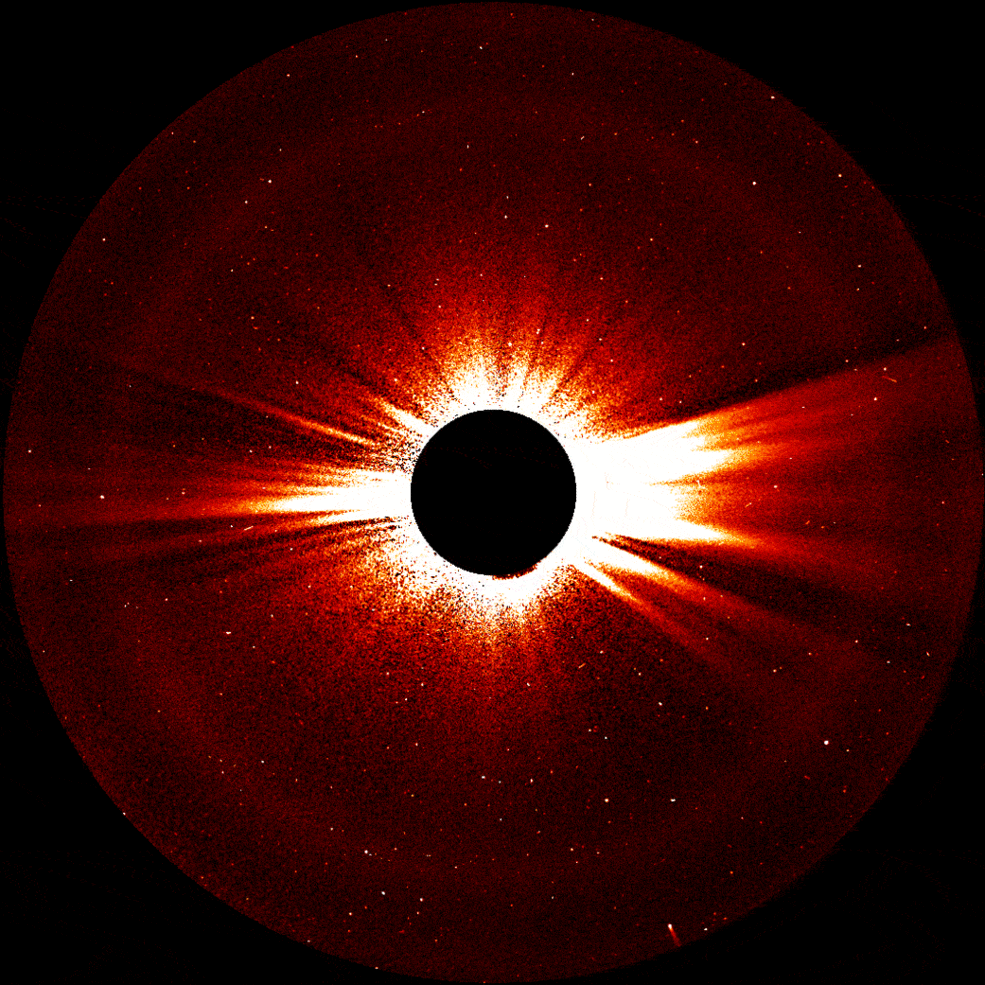Two NASA, ESA Observatories Spot Recurring Comet 96P Simultaneously

In the past, the European Space Agency (ESA) and NASA have collaborated on several missions. One such collaboration called the Solar and Heliospheric Observatory or SOHO made an interesting observation recently.
Comet 96P, a frequent SOHO visitor, was spotted in the observatory’s telescopic sight on Oct. 25, when it was seen entering the lower right corner of SOHO’s sight, according to a NASA report. Comet 96P “skirted up and around the right edge before leaving on Oct. 30. SOHO,” the report added.
SOHO has encountered comet 96P on four different occasions before this sighting — in 1996, 2002, 2007 and 2012.
Interestingly, comet 96P was also spotted by a NASA observatory called Solar and Terrestrial Relations Observatory (STEREO), the third mission in NASA's Solar Terrestrial Probes program (STP).
The comet was spotted by STEREO from “Oct. 26-28, from the opposite side of Earth’s orbit. It is extremely rare for comets to be seen simultaneously from two different locations in space, and these are the most comprehensive parallel observations of comet 96P yet,” said the NASA report.
The observations from two different sources have scientists salivating, as the data from these combined observations will help us learn more about the comet’s composition and its interaction with the solar wind, the constant flow of charged particles from the Sun.
Comet "96P" has become a frequent visitor for this mission: https://t.co/FlbEvf9ZmY via @NASASun pic.twitter.com/KtxFoO4iuZ
— NASA Goddard (@NASAGoddard) November 5, 2017
According to the report, polarization measurements of the comet were acquired from both possible sources. These measurements give us the details about sunlight in which all the light waves become oriented the same way after passing through a medium.
Scientists want to study the interactions between light and the particles in the tail of the comet, and the collective polarization data will help them do so.
“Polarization is a strong function of the viewing geometry, and getting multiple measurements at the same time could potentially give useful information about the composition and size distribution of the tail particles,” said William Thompson, STEREO chief observer at NASA’s Goddard Space Flight Center in Greenbelt, Maryland, in the report.
Comet 96P is also known as comet Machholz and is named after the amateur astronomer — Dan Machholz — who discovered the comet in 1986. The orbit of the comet takes it around the sun every 5.24 years. It makes its closest approach to the Sun at 11 million miles, which according to the report is a very close distance for a comet.
“When comet 96P appeared in SOHO’s view in 2012, amateur astronomers studying the SOHO data discovered two tiny comet fragments some distance ahead of the main body, signaling the comet was actively changing. This time around they have detected a third fragment — another breadcrumb in the trail that indicates the comet is still evolving,” said the report.
Comet 96P’s unusual composition makes it a mouth-watering specimen for study for sceintists at NASA and ESA. It also shares orbit with a "large, diverse" group of comets. They all originate from one big comet that broke into smaller fragments over a millennium ago. Comet 96P is considered the "parent" of this group and another group of comets. Both of these groups were discovered by citizen scientists who combined SOHO data with a number of Earth-crossing meteor streams. NASA and ESA hope that by understanding the evolution of this comet, scientists can learn more about the nature and origins of this complex family.
© Copyright IBTimes 2024. All rights reserved.




















